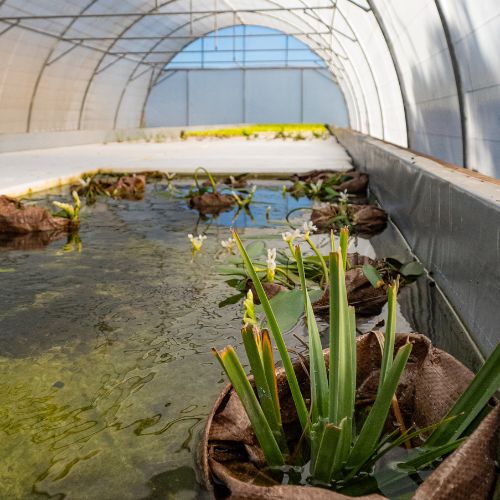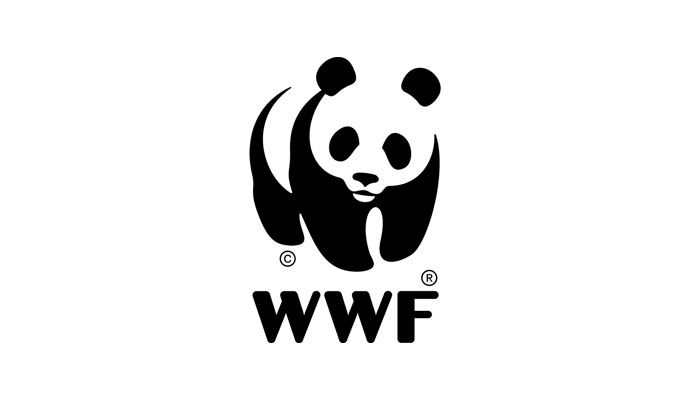South Africa’s wetlands are vanishing. Once widespread and thriving, it’s now estimated that only around 3% of the country’s original wetlands remain.

The consequences of these losses are devastating. Wetlands filter water, regulate flow, reduce flood risks, store carbon and support extraordinary biodiversity. Their decline impacts not only the plants and animals that depend on them, but also people – especially in the face of a changing climate.
That’s why a new project to restore degraded wetlands and riparian zones through active restoration in the Nuwejaars Wetlands Special Management Area (NWSMA) is so important. And it all starts with growing wetland plants to the point that they’re strong enough to play this key role.

Restoring wetland function
The project is funded by WWF South Africa and focuses on two core innovations: the creation of a wetland nursery and the development of a sustainable aquaponics system – both aimed at restoring natural wetland function in one of the country’s most unique ecological regions.
“This is a new angle in our work in wetland rehabilitation,” says Erica Brink, Conservation Manager at the NWSMA. “For years, we’ve known how vital our wetlands are. Now, with WWF South Africa’s support, we have more tools to take real, meaningful action to restore them.”

Why are the Nuwejaars Wetlands important?
The Nuwejaars Wetlands, nestled in the Agulhas Plain of the Overberg, are recognised as one of the most important wetland systems in South Africa for vegetation diversity. The system includes a range of seasonal and permanent wetlands that support threatened bird species and an array of aquatic and terrestrial life.
But decades of pressure from invasive alien species, uncontrolled fires, damage from flooding and past agricultural actions have left large portions of these wetlands degraded.
Erica says, “These wetlands are living, breathing ecosystems that support our water systems, our climate resilience and our agricultural sustainability.”
The dedicated wetland nursery, where aquatic and semi-aquatic plants are being cultivated for transplanting into degraded areas, is already well underway. It includes a newly installed aquaponics system, a closed-loop method that merges fish farming (aquaculture) with soilless plant cultivation (hydroponics). In this system, fish produce waste that’s converted by bacteria into nutrients for plants. In return, the plants clean the water for the fish – a symbiotic, water-efficient process.


A novel approach
Although the norm is to use invasive fish species such as tilapia or carp in the aquaponics system – as they are hardy and grow fast, the NWSMA is taking a novel approach. Instead indigenous fish species – with the focus currently on freshwater mullet (Pseudomyxus capensis) – have been used as the stocking fish to provide nutrients to the system. This approach is now being tested, with positive results to date, although more time is needed to fully understand the opportunities and challenges.
Erica says, “We are trying to mimic a natural wetland as far as possible in our aquaponics systems. As such, we are making use of indigenous species in all facets of the process, so that our system operates just as our Nuwejaars Wetlands would in nature – with a delicate balance between water, plants and aquatic life. By working with nature, we’re able to create a resilient, self-sustaining system that supports environmental restoration.”
A living lab
Through the aquaponics setup, the team is already cultivating species like waterblommetjies (Aponogeton distachyos), wild water mint (Mentha aquatica), and palmiet (Prionium serratum), essential to wetland rehabilitation. The latter in particular helps to protect riverbanks against erosion, especially during flooding events. Edible crops like spinach and spring onions are also being trialled in the aquaponics system.
“Starting a wetlands nursery from scratch isn’t easy,” says Erica. “But we’ve had training from the Grootbos Foundation, and we’re building a strong, knowledgeable team to take it forward. These plants will be the lifeblood of our restoration work – returning function and resilience to damaged systems.”
The wetlands nursery and aquaponics system represent a major leap for the NWSMA’s work in ecosystem restoration. It offers a scalable, community-driven solution that enhances biodiversity, protects water systems and builds local knowledge and resilience.

Images supplied by LoveGreen Communications.
Thank you, WWF South Africa
“What we’re doing here is more than planting reeds,” Erica says. “We’re restoring the heart of this landscape. We’re incredibly grateful to WWF South Africa for believing in this vision and helping make it a reality.”
As the impacts of climate change intensify and water insecurity grows, it is becoming all the more important to protect wetlands. And where passive restoration simply won’t do the job, this active rehabilitation will play a key role in allowing these wetlands to function as they should, and provide the ecological services they also would’ve played.

